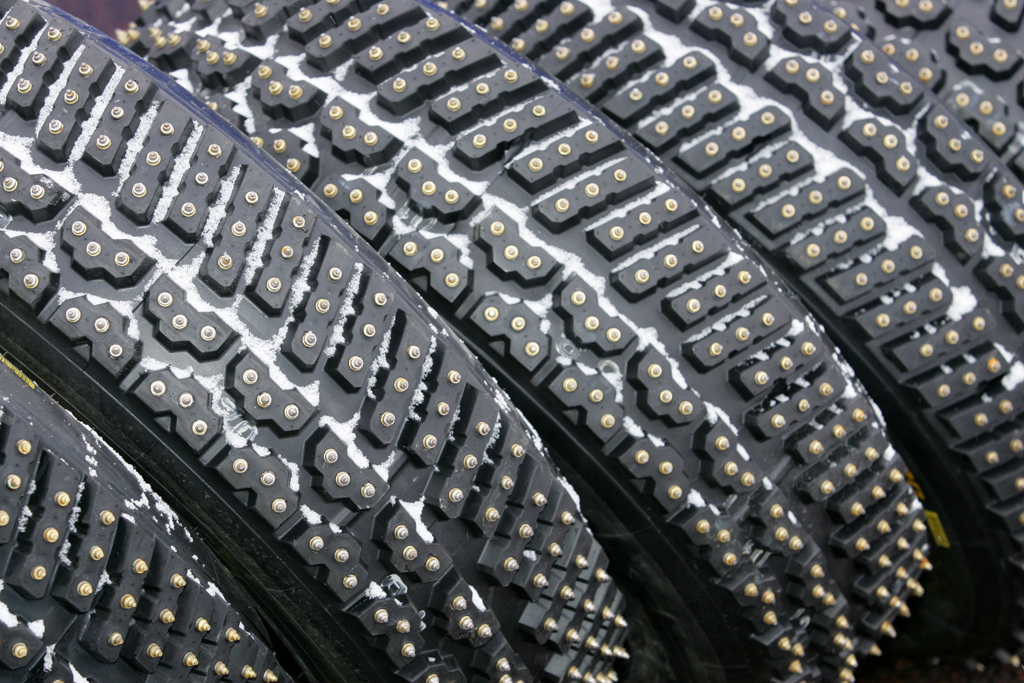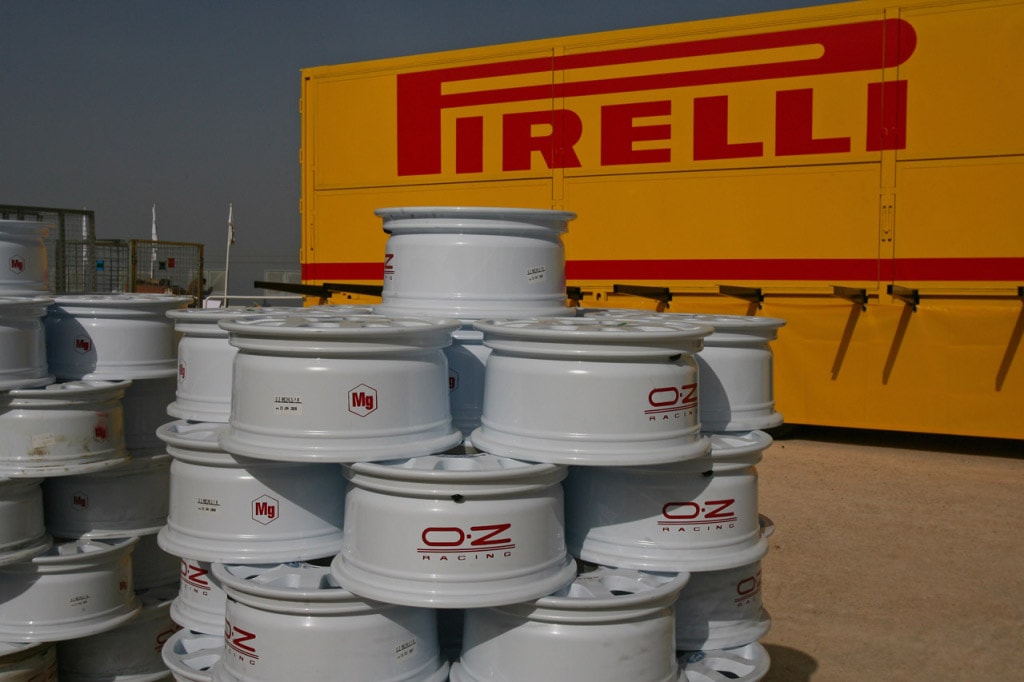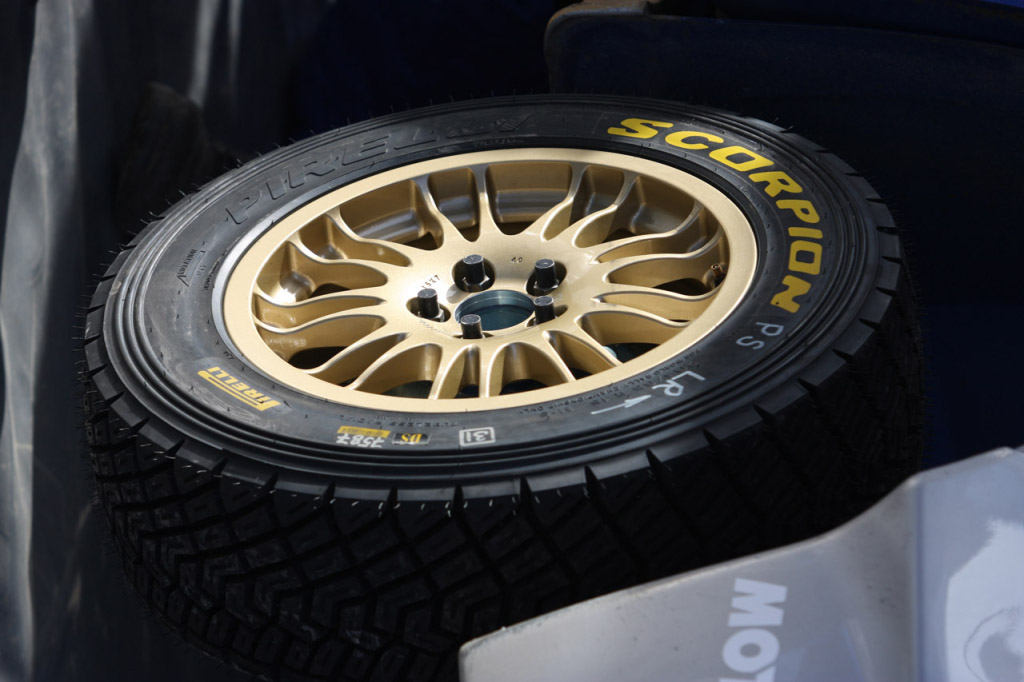Tires in the World Rally Championship are maybe the deciding factor in setting up the winner or the loser of one event. And that's a fact, as the compound provided by Pirelli for the past few years – and other tire manufacturers in the past – makes the transition between the powerful, 300+ HP engines and the road.
It's a well-known fact that the cars that are currently competing in the World Rally Championship – among which the Citroen C4 WRC and Ford Focus RS WRC are the only ones battling for the title – are very much even in terms of engine performance or setup. Therefore, like in any other racing series where the technical package between competitors is much the same (more or less), the skill of the driver and the “feel of the car” are the two most important factors behind success or failure.
As we're not here to discuss the former – it's not like we even have the authority to do that anyway – we're going to focus on the things that can influence the “feel”, meaning how the racer can adjust his driving style to the different type of surfaces he encounters throughout the season (through tires, suspension set up, etc).
Unlike in Grand Prix racing, rallying occurs on asphalt, gravel or snowy/icy roads, which forces the tire supplier for the championship, Pirelli in this case, to pour millions in developing several types of tires. Additionally, the weather is also a factor in Pirelli's development plan, as rain can have a great influence in how the surface will change from dry to wet/slippery. Although we have named only 3 types of surface for rally racing, it's worth mentioning that each has multiple characteristics depending on the event. For example, there are several types of gravel (rocky, dusty, full of loose stones) as there are several types of asphalt (smooth, abrasive) or snow (showy, icy), not to mention the fact that some rallies have mixed surfaces (most commonly asphalt/gravel).
As far as the asphalt tires are concerned, these are the most common – if one can say that – as compared to the design used by Pirelli for their road car tires. In fact, according to the Italian manufacturer, their WRC-spec asphalt tires are based on the technology used for the Pirelli Ultra High Performance tires for road cars.
The outer shoulder - as Pirelli likes to call it – of their asphalt tire is visibly wider than the inner shoulder, which makes for improved contact surface between the tire and the road in curves. Additionally, the grooves on the inner section of the tire improve the car's handling on wet asphalt, as it provides extra grip and tackles aquaplaning problems. The tires provided to the WRC teams have two types of compound, soft and hard, the first being used for smoother asphalt on rainy conditions and the latter being used for abrasive asphalt. Additionally, the soft compound is used in rallies with lower temperatures, as it won't wear out too fast, while the hard compound is used when higher temperatures occur.
As far as the gravel tires are concerned, here is where it gets tricky for Pirelli, as the heavy and violent driving put in by the rally racers during the gravel events lead to some immense forces applied to the tires. Consequently, the WRC-spec gravel tires have a totally different structure as compared to the ones used for road cars, meaning their compound is much stronger.
As you all know, the area most prone to punctures is the exterior wall of a tire. You've all seen video coverage from different gravel rallies in the WRC, where the cars slide in curves to score a better time at the finish line. During those slides, some kind of contact with a sharp rock on the road is imminent, which can easily provoke a cut on the outer wall of the tire. Consequently, Pirelli has reinforced that particular area of their tires' structure, while also creating a special tread design to improve the grip on gravely roads.
Additionally, the gravel tires prepared by Pirelli use run-flat technology, therefore allowing a driver that experiences a puncture to continue in the stage until the finish line, without losing too much time or having to quit the event. What the run-flat tire does is resist the effects of deflation under puncture, consequently allowing the racer to drive the car at reduced speeds of under 60 mph until the nearest check point. As in the case of asphalt tires, the gravel-spec ones (also called Scorpion) benefit from two compounds – soft and hard – for muddy or more compact gravel respectively.
Finally, the snow tires developed by Pirelli are actually divided into two types: for snowy or icy conditions. As far as the former is concerned (snowy surfaces can be found in events like Rally Sweden), the tires benefit from the presence of studs on the surface of the tire (approximately 1.5 mm in height) in order to improve the grip on snow.
Obviously, as there are at least two types of snow – softer or heavier – the studs can be detached from the surface of the tire (in the case of soft snow and slippery conditions), therefore improving the car's behavior on the road. Under these conditions, it is ultimately for the drivers to decide whether to use studs or stick to their usual snow tread design during rally day. These types of tires are called Sottozero (Under 0 degrees) “Snow”, different from the Sottozero Ice, which are used on rallies with icy roads (such as Rally Norway).
On ice, it's clear enough that studs are a must have for all tires used in the event, therefore the Italians have designed a special technology which incorporates the studs on the external surface of the tire “during the production process.” Consequently, the drivers cannot decide not to use studs on their tires – not that anyone should want that anyway – as these are no longer detachable.
According to the FIA regulations “the use of any device for maintaining the full performance of the tire with an internal pressure equal to or less than atmospheric pressure is forbidden. The interior of the tire (the space between the rim and the internal part of the tire) must be filled only with air.” Additionally “any chemical and/or mechanical treatment of tires is prohibited” and “any device designed to clamp the tire to the rim is not permitted.”
Finally, each driver is allowed a maximum of tire changes throughout the duration of a single WRC event, as stated by the FIA rulebook. The ruling body therefore permits only a maximum of 8 tire changes during “any one rally” under the following conditions:
It's a well-known fact that the cars that are currently competing in the World Rally Championship – among which the Citroen C4 WRC and Ford Focus RS WRC are the only ones battling for the title – are very much even in terms of engine performance or setup. Therefore, like in any other racing series where the technical package between competitors is much the same (more or less), the skill of the driver and the “feel of the car” are the two most important factors behind success or failure.
As we're not here to discuss the former – it's not like we even have the authority to do that anyway – we're going to focus on the things that can influence the “feel”, meaning how the racer can adjust his driving style to the different type of surfaces he encounters throughout the season (through tires, suspension set up, etc).
Unlike in Grand Prix racing, rallying occurs on asphalt, gravel or snowy/icy roads, which forces the tire supplier for the championship, Pirelli in this case, to pour millions in developing several types of tires. Additionally, the weather is also a factor in Pirelli's development plan, as rain can have a great influence in how the surface will change from dry to wet/slippery. Although we have named only 3 types of surface for rally racing, it's worth mentioning that each has multiple characteristics depending on the event. For example, there are several types of gravel (rocky, dusty, full of loose stones) as there are several types of asphalt (smooth, abrasive) or snow (showy, icy), not to mention the fact that some rallies have mixed surfaces (most commonly asphalt/gravel).
As far as the asphalt tires are concerned, these are the most common – if one can say that – as compared to the design used by Pirelli for their road car tires. In fact, according to the Italian manufacturer, their WRC-spec asphalt tires are based on the technology used for the Pirelli Ultra High Performance tires for road cars.
The outer shoulder - as Pirelli likes to call it – of their asphalt tire is visibly wider than the inner shoulder, which makes for improved contact surface between the tire and the road in curves. Additionally, the grooves on the inner section of the tire improve the car's handling on wet asphalt, as it provides extra grip and tackles aquaplaning problems. The tires provided to the WRC teams have two types of compound, soft and hard, the first being used for smoother asphalt on rainy conditions and the latter being used for abrasive asphalt. Additionally, the soft compound is used in rallies with lower temperatures, as it won't wear out too fast, while the hard compound is used when higher temperatures occur.
As far as the gravel tires are concerned, here is where it gets tricky for Pirelli, as the heavy and violent driving put in by the rally racers during the gravel events lead to some immense forces applied to the tires. Consequently, the WRC-spec gravel tires have a totally different structure as compared to the ones used for road cars, meaning their compound is much stronger.
As you all know, the area most prone to punctures is the exterior wall of a tire. You've all seen video coverage from different gravel rallies in the WRC, where the cars slide in curves to score a better time at the finish line. During those slides, some kind of contact with a sharp rock on the road is imminent, which can easily provoke a cut on the outer wall of the tire. Consequently, Pirelli has reinforced that particular area of their tires' structure, while also creating a special tread design to improve the grip on gravely roads.
Additionally, the gravel tires prepared by Pirelli use run-flat technology, therefore allowing a driver that experiences a puncture to continue in the stage until the finish line, without losing too much time or having to quit the event. What the run-flat tire does is resist the effects of deflation under puncture, consequently allowing the racer to drive the car at reduced speeds of under 60 mph until the nearest check point. As in the case of asphalt tires, the gravel-spec ones (also called Scorpion) benefit from two compounds – soft and hard – for muddy or more compact gravel respectively.
Finally, the snow tires developed by Pirelli are actually divided into two types: for snowy or icy conditions. As far as the former is concerned (snowy surfaces can be found in events like Rally Sweden), the tires benefit from the presence of studs on the surface of the tire (approximately 1.5 mm in height) in order to improve the grip on snow.
Obviously, as there are at least two types of snow – softer or heavier – the studs can be detached from the surface of the tire (in the case of soft snow and slippery conditions), therefore improving the car's behavior on the road. Under these conditions, it is ultimately for the drivers to decide whether to use studs or stick to their usual snow tread design during rally day. These types of tires are called Sottozero (Under 0 degrees) “Snow”, different from the Sottozero Ice, which are used on rallies with icy roads (such as Rally Norway).
On ice, it's clear enough that studs are a must have for all tires used in the event, therefore the Italians have designed a special technology which incorporates the studs on the external surface of the tire “during the production process.” Consequently, the drivers cannot decide not to use studs on their tires – not that anyone should want that anyway – as these are no longer detachable.
According to the FIA regulations “the use of any device for maintaining the full performance of the tire with an internal pressure equal to or less than atmospheric pressure is forbidden. The interior of the tire (the space between the rim and the internal part of the tire) must be filled only with air.” Additionally “any chemical and/or mechanical treatment of tires is prohibited” and “any device designed to clamp the tire to the rim is not permitted.”
Finally, each driver is allowed a maximum of tire changes throughout the duration of a single WRC event, as stated by the FIA rulebook. The ruling body therefore permits only a maximum of 8 tire changes during “any one rally” under the following conditions:
| Driver Priority | Max Number of Tires/Change | Max Number of Extra Tires for Shakedown |
| P1 | 6 | 6 |
| P2 | 6 | 6 |
| P3 - PWRC/SWRC & other 4WD cars | 4 | 5 |
| P3 - JWRC | 28 Tires/Event | 28 Tires/Event |
| Non Priority | 6 | Unrestricted |





